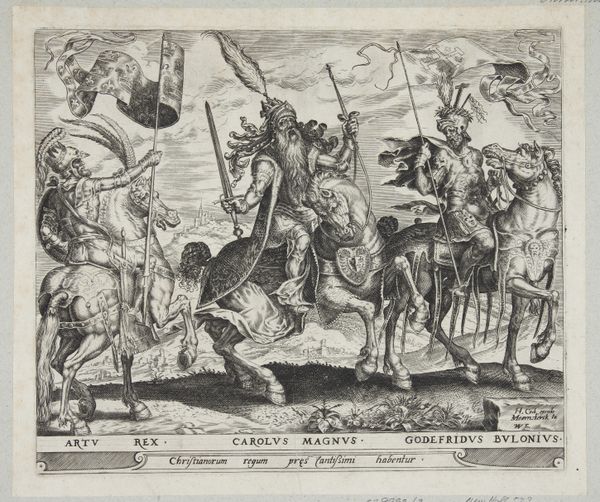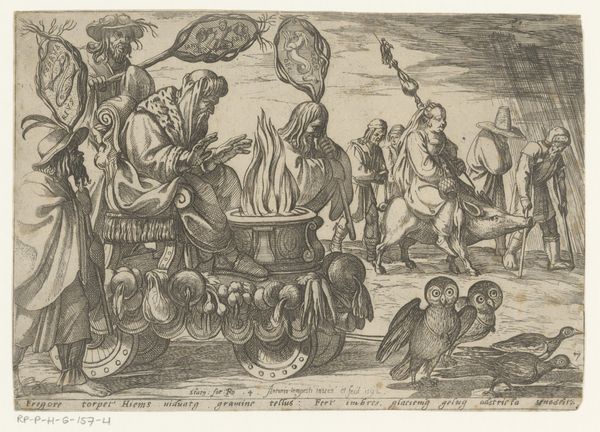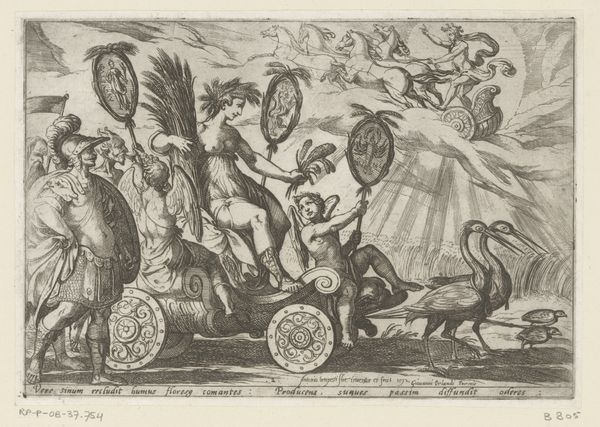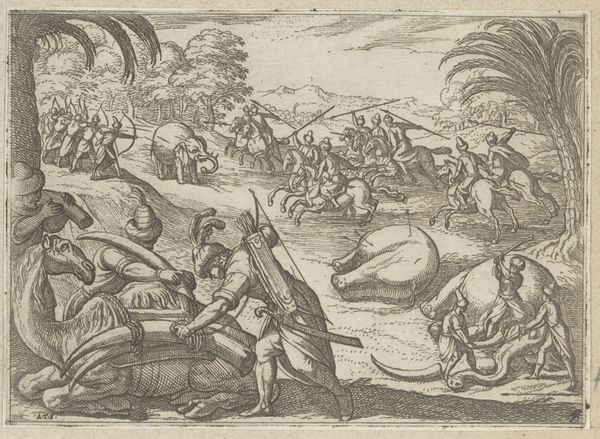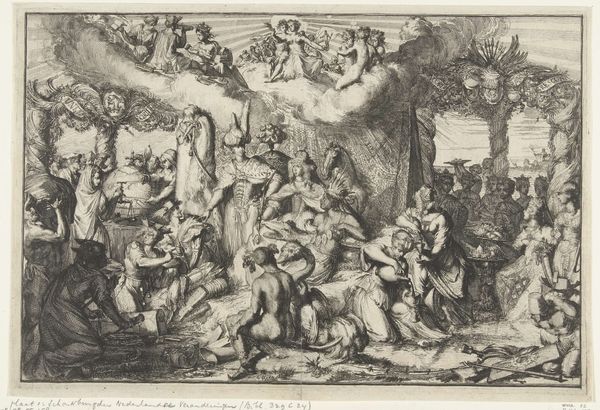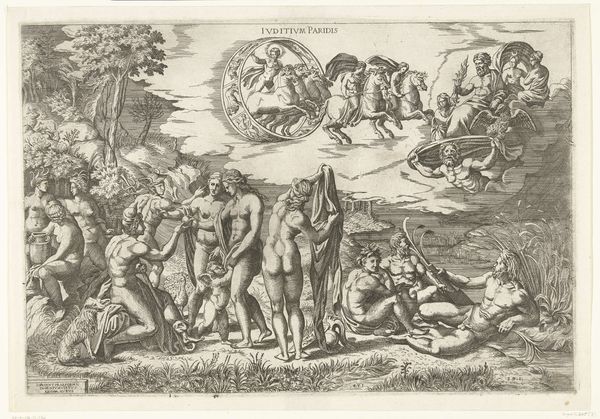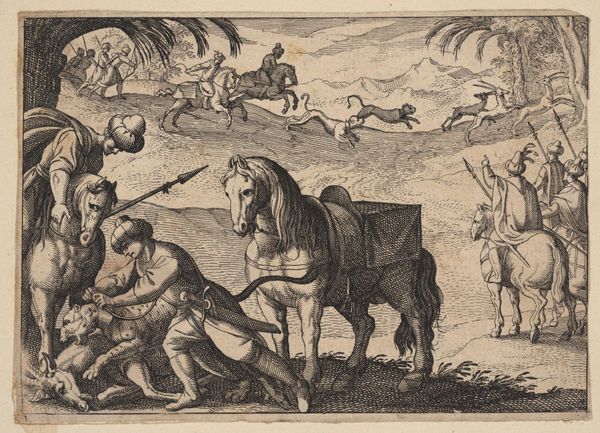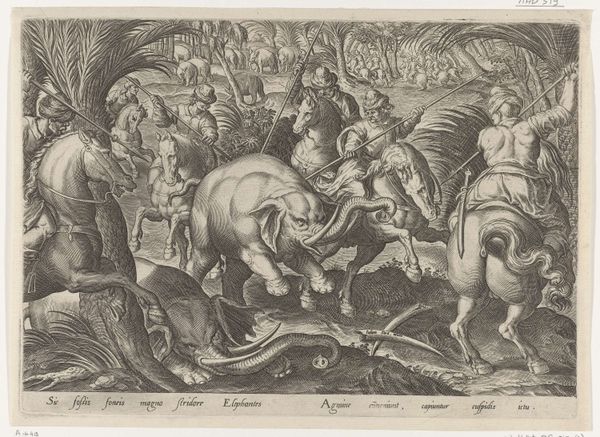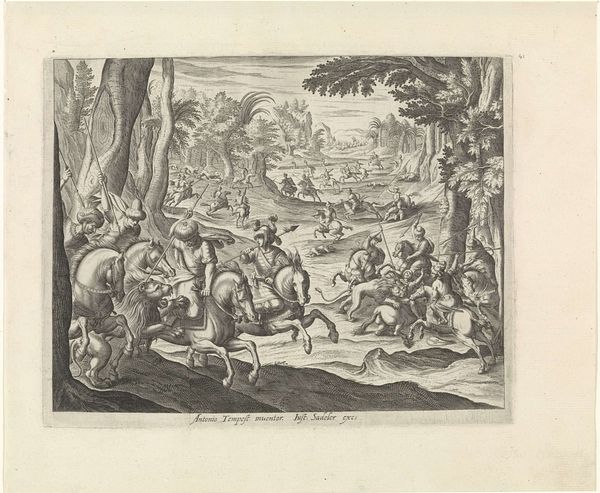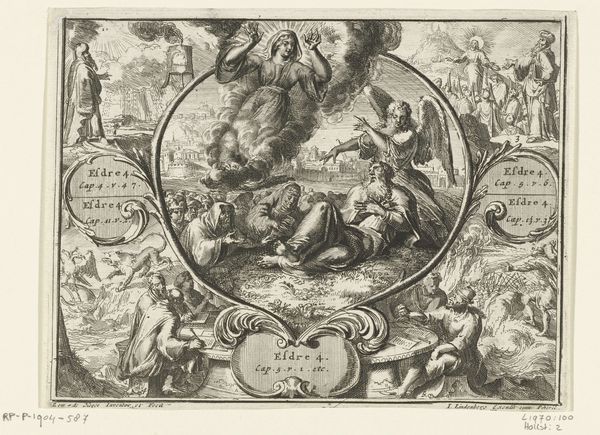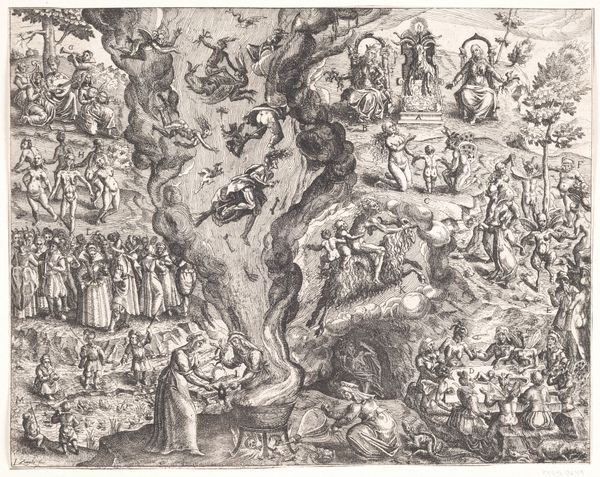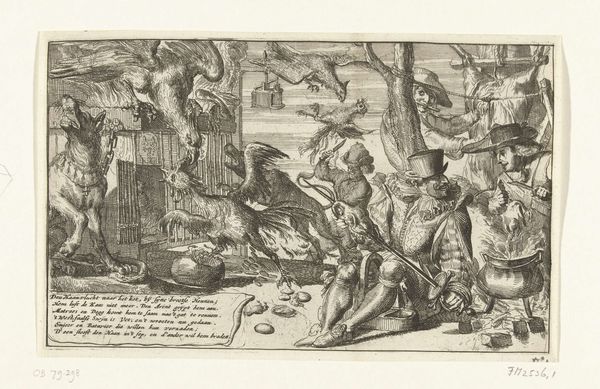
Copyright: CC0 1.0
Curator: Antonio Tempesta, who lived from 1555 to 1630, created this print entitled "Spring," housed right here at the Harvard Art Museums. Look at that jubilant figure in the chariot! Editor: Yes, I'm immediately struck by the density of the etched lines and the implied labor of producing such a detailed image. The procession feels almost overloaded with figures. Curator: Notice how Tempesta layers classical and pastoral imagery, creating a very specific symbolic language. The wreath, the musical instruments, the oxen—they evoke a sense of abundance and fertility. Editor: I wonder about the socio-economic implications of depicting that abundance. Who was consuming these images, and what did they represent in terms of social status and control over resources? It speaks to a certain leisure. Curator: It does, doesn’t it? I find it compelling how he’s referencing very ancient concepts of cyclical renewal. Even now, the image resonates with our own contemporary celebrations of Spring. Editor: Ultimately, it's the materiality and production process that fascinate me the most. The labor involved in translating such a scene onto a copper plate, and the power that image then held. Curator: It's fascinating how a seemingly simple scene can open up such expansive lines of inquiry. Editor: Agreed. It really underscores the complexities embedded within this intricate composition.
Comments
No comments
Be the first to comment and join the conversation on the ultimate creative platform.

